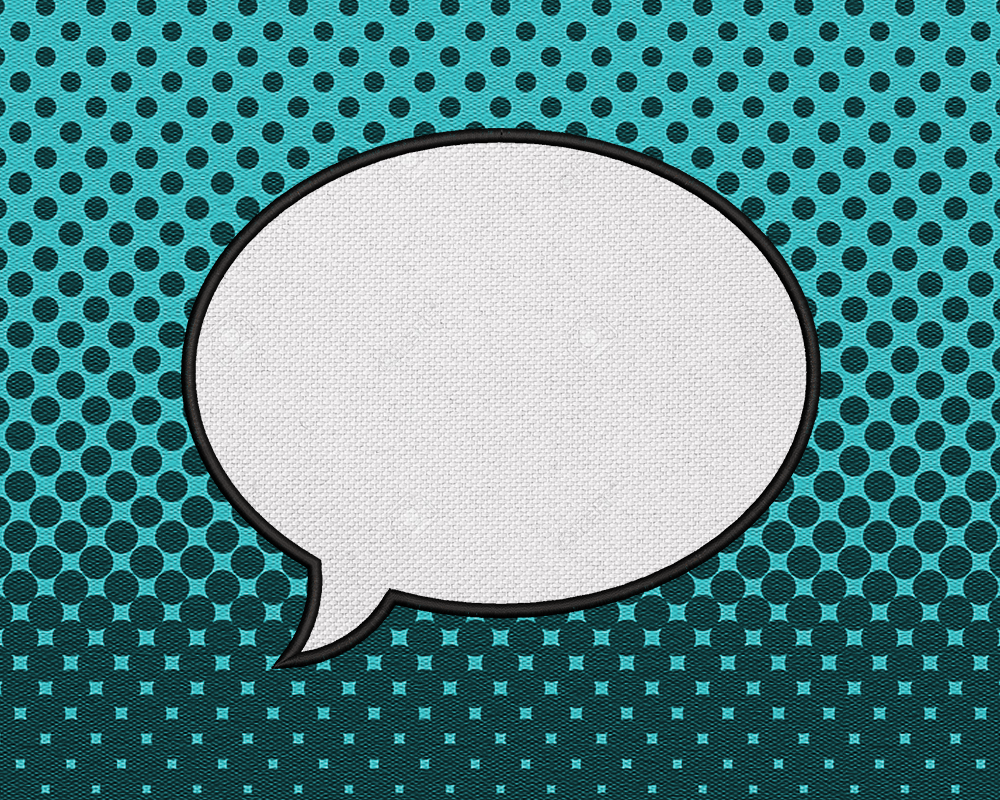

I draw the tail roughly in place with the Bézier tool, overlapping the edge of the ellipse. For "Elvie": These are usually oval bubbles, created with the Ellipse tool.I just draw a rounded rectangle, convert to path, click the side I want to add the tail to, press "Insert" twice, then adjust the node positions to drag out the tail and give the shape I want. For "The Greys": As an aesthetic choice, the Greys usually have rounded-rectangle speech bubbles.What I do is less flexible though, so the method described above might be a better option for a lot of users. Though for what it's worth, in practice, I don't perform so many steps when creating my "Greys" or "Elvie" comic strips.
#Comic book speech bubble update
The advantage of this approach is that you can change the shape of the top object, and the bottom one (and hence the outline) will update to match.
Continue as above for adding the tail and text. Select the "Top" shape and change the fill colour as necessary. Move the clone below the "Top" shape (PgDn) in the z-order. Create a clone (Alt-D) then set the stroke width and colour on the clone (as above, double the desired stroke width). Right click on the Stroke swatch at he bottom left of the window and select "Unset stroke". Create the "Top" object with a temporary fill colour that you can see. This can be done with layers, but is a little easier if all the objects are kept on a single layer, so that's what I'll describe: Because one of its bordering segments is missing, it will look as if there's no division between the bubble & the spout.Ī slight variation on creating the "Top" and "Bottom" shapes from the original post. If necessary, click to raise it to the top so that overlapped portion of the bubble's perimeter is no longer visible. * Selecting the object which began as a triangle allows moving it to just overlap part of the bubble's perimeter. * Clicking on the 2 other lines allows them to be pulled into curves which meet at a point (opposite the segment which was removed). * Click on the line segment at the side which will overlap the bubble, then delete that segment between nodes. * Select the triangle, then click to work with nodes. * Set fill & stroke as desired, making both bubble & triangle have the same values. * Make a triangle using the bezier curves tool for 3 connected line segments enclosing the space. This lets me make bulgy segments between the nodes, to fit my whim. * Make an oval, then use "object to path". I make talk bubbles by just using the bubble and a triangle. To give your "Tail" triangle a sharper tip, raise the "Join" to about 13 or higher. Now add the text desired and shape until it fits perfectly.ĭuplicate the "Top" and "Bottom" shapes and move them together to form a second bubble area. This should make it appear to be integrated into the talk bubble. Move the tail until the open end of the angle or the shortest side of the triangle is tucked between the "Top" and "Bottom" object. Set the Stroke to half the Width of the original object. Ensure the "fill" is the same colour as the object in the "Top" layer. Using either the Freehand tool ( F6) or the Bezier tool ( Shift+F6) create a "V" shape or a triangle. In the Layers tool box, click the "Tail" layer to set it as our working layer. We're not expecting the stroke to disappear entirely. This will make the object appear to have a 1 mm stroke width. With our object selected, click the Fill and Stroke tool box and change the object's Width to 0 mm. However, we now have a copy of our object in the "Top" layer that we can modify. Use Ctrl+Alt+V to paste the object right on top of itself. In the Layers tool box, click the "Top" layer to make it our working layer. (In my case 2 millimeters for a final thickness of 1 mm.) Make any other adjustments here such as Dashes, etc.Ĭlick the shape you created and copy it ( Ctrl+C). 

Open the Fill and Stroke (Shift+Ctrl+F) dialog box, click the Stroke Style tab and adjust the Width to double the desired thickness. In my case, I'll be using an Oval with the help of the Circles tool (F5). The names are not important they're just reminders to help keep our focus.Ĭlick the "Bottom" layer to make it our working layer.Ĭreate a shape large enough to contain the text necessary. (To open the layers control box, use Shift+Ctrl+L.)Ĭreate 4 specific layers for the talk bubble. If you're working with an image file, add it to the document and set it on its own layer. Let's create some talk bubbles where the tail, the part that points to the speaker, is flexible and does not need to be redrawn.







 0 kommentar(er)
0 kommentar(er)
